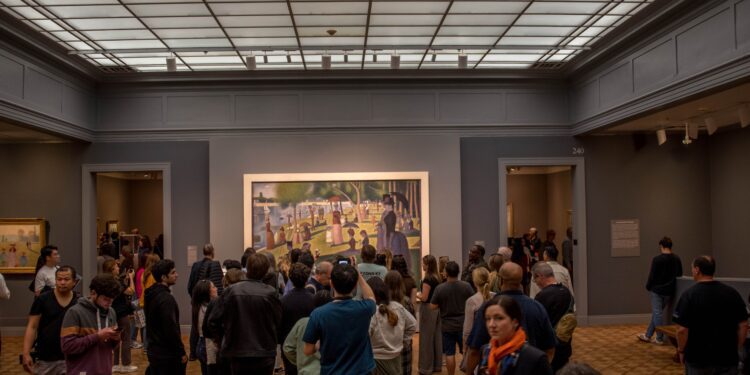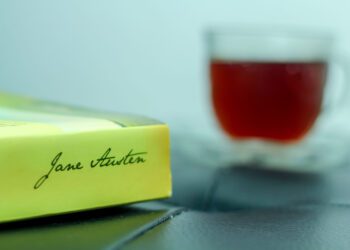Georges Seurat’s once-mocked painting Bathers at Asnières is both an “exquisite distillation of the very essence of summer” and “a modern wonder in the art of seeing”.
At first glance, Seurat’s colossal 2m x 3m (79in x 118in) canvas – much larger than gallery-goers were accustomed to encountering – is an outsized celebration of the lazy luminosity of the season, enshrining the relaxed mood of workers on a break from nearby factories as they bathe in etherealising sunshine along the banks of the Seine, northwest of central Paris. The light that polishes the pallid skin of figures who have spent too long stewing in the sooty fug of sunless foundries (those “dark Satanic mills” of which William Blake once wrote) seems initially to bestow on them a monumentality rarely seen in contemporary art and a grandeur typically reserved for the depiction of myth and history. Look closer, however, and their smooth and deceptively solid physiques suddenly begin to unstitch themselves, unweaving into a loosening mesh of pulsing photons – waves of pure hue and pigment distinct from form. The workers are animated in their motionlessness: hefty and weightless in equal measure.
To unlock the latent layers of meaning in the work one needs a key and an expert guide. Fortunately, Seurat has provided us with both, hiding in plain sight, signalling our attention from near the very centre of the painting. There, just above the slumped shoulders of the central-most shirtless figure, fitted with a helmet of flattened auburn hat hair, is a slender chimney chugging smoke – one of several smokestacks that puncture the humid sky – that simultaneously interrupts Seurat’s vision and is arguably responsible for every aspect of it.
The chimney rises from one of the many factories in the nearby neighbourhood of Clichy, the centre of French candle manufacturing at the time – an extraordinarily lucrative industry made possible by the scientific ingenuity of Michel Eugène Chevreul, a pioneering French chemist whose intellectual insights helped shape the 19th Century. In addition to isolating stearic acid – a crucial component of animal fat from which an odourless and clean-burning candle could be crafted – Chevreul is credited with formulating a highly influential theory of colour on which every inch of Seurat’s painting is painstakingly based. To understand the essence of Seurat’s singular vision, one must get to grips with the essence of the mind of the man who, in a real sense, lit the wick of both the work’s material subject and revolutionary manner of seeing.
Seurat set about plotting Bathers like a mathematical proof of Chevreul’s “law of simultaneous contrast”. His fastidiousness is evident in how he positions orange-blushed flesh against blue-green water; how the grass is flecked with yellow-lilac flickers; and how he outlines with cool blue the warm and rosy tones of the boys’ skin, intensifying the figures and making them visually throb. In these moments, Seurat succeeds in scrubbing away the artificial social markers of class and status. What remains is the soul of colour, shaken through the sieve of Chevreul’s theory.
From its inception, Seurat was determined that Bathers at Asnières would not be just another painting. It was an audacious manifesto on how we see the world when the artificial trappings of class and status, form and function, are filtered away to reveal the vital vibration of colour, pure colour – a meticulously plotted statement of purpose and artistic intent. In preparation for the work, Seurat dramatically departed from Impressionist spontaneity and its habit of working hastily outdoors, undertaking in his studio more than a dozen oil sketches and nearly as many crayon drawings, convinced this would be the masterwork that established his place in the art world. Bathers, he believed, would be the painting that people noticed – the one he could confidently submit to the famously implacable jury of the influential Salon, the institution whose stingy regard, if secured, could determine the career prospects of any aspiring artist. So he submitted it. And they rejected it.












